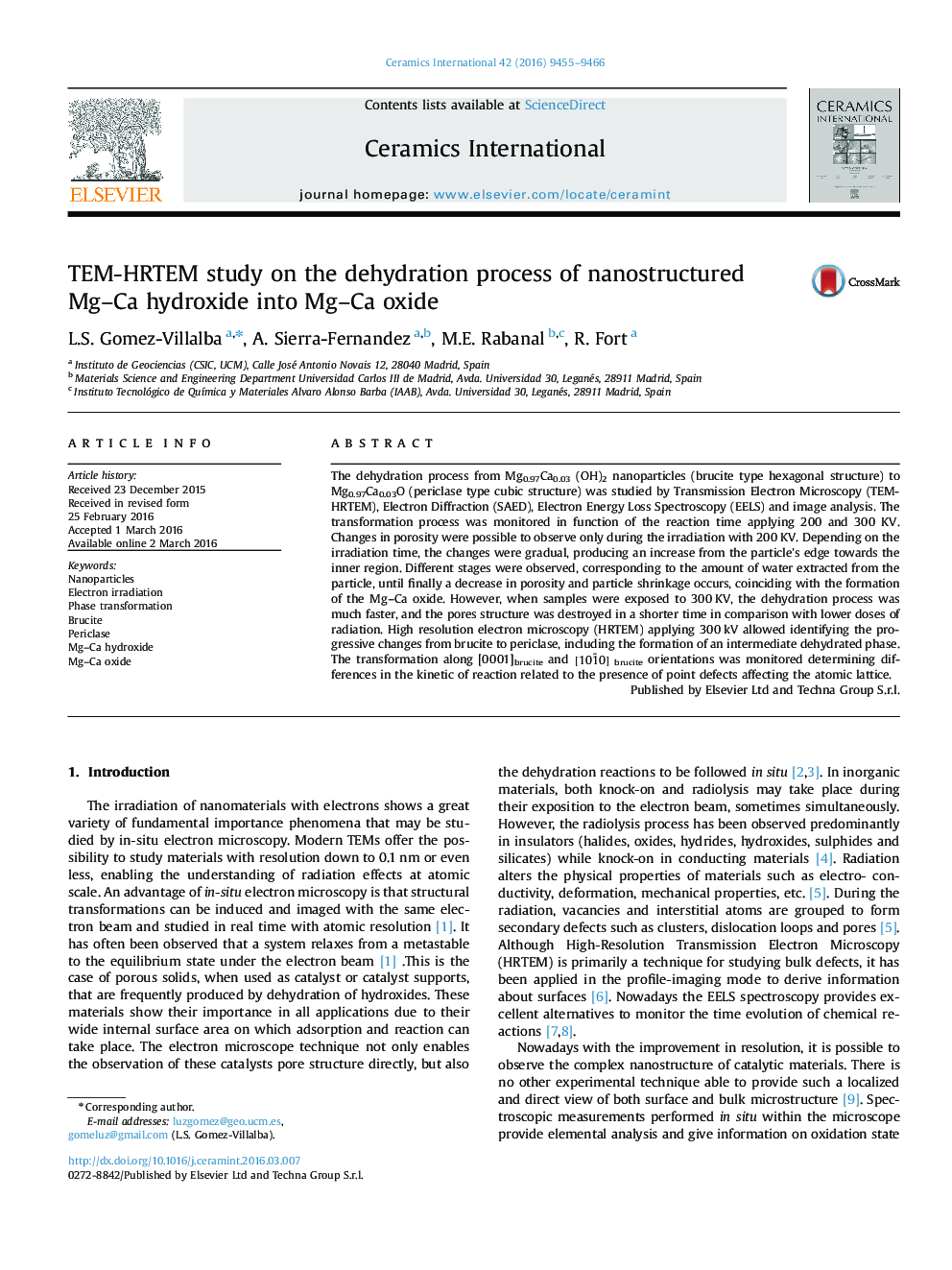| Article ID | Journal | Published Year | Pages | File Type |
|---|---|---|---|---|
| 1459013 | Ceramics International | 2016 | 12 Pages |
The dehydration process from Mg0.97Ca0.03 (OH)2 nanoparticles (brucite type hexagonal structure) to Mg0.97Ca0.03O (periclase type cubic structure) was studied by Transmission Electron Microscopy (TEM-HRTEM), Electron Diffraction (SAED), Electron Energy Loss Spectroscopy (EELS) and image analysis. The transformation process was monitored in function of the reaction time applying 200 and 300 KV. Changes in porosity were possible to observe only during the irradiation with 200 KV. Depending on the irradiation time, the changes were gradual, producing an increase from the particle's edge towards the inner region. Different stages were observed, corresponding to the amount of water extracted from the particle, until finally a decrease in porosity and particle shrinkage occurs, coinciding with the formation of the Mg–Ca oxide. However, when samples were exposed to 300 KV, the dehydration process was much faster, and the pores structure was destroyed in a shorter time in comparison with lower doses of radiation. High resolution electron microscopy (HRTEM) applying 300 kV allowed identifying the progressive changes from brucite to periclase, including the formation of an intermediate dehydrated phase. The transformation along [0001]brucite and [101¯0]brucite orientations was monitored determining differences in the kinetic of reaction related to the presence of point defects affecting the atomic lattice.
Graphical abstractFigure optionsDownload full-size imageDownload as PowerPoint slide
